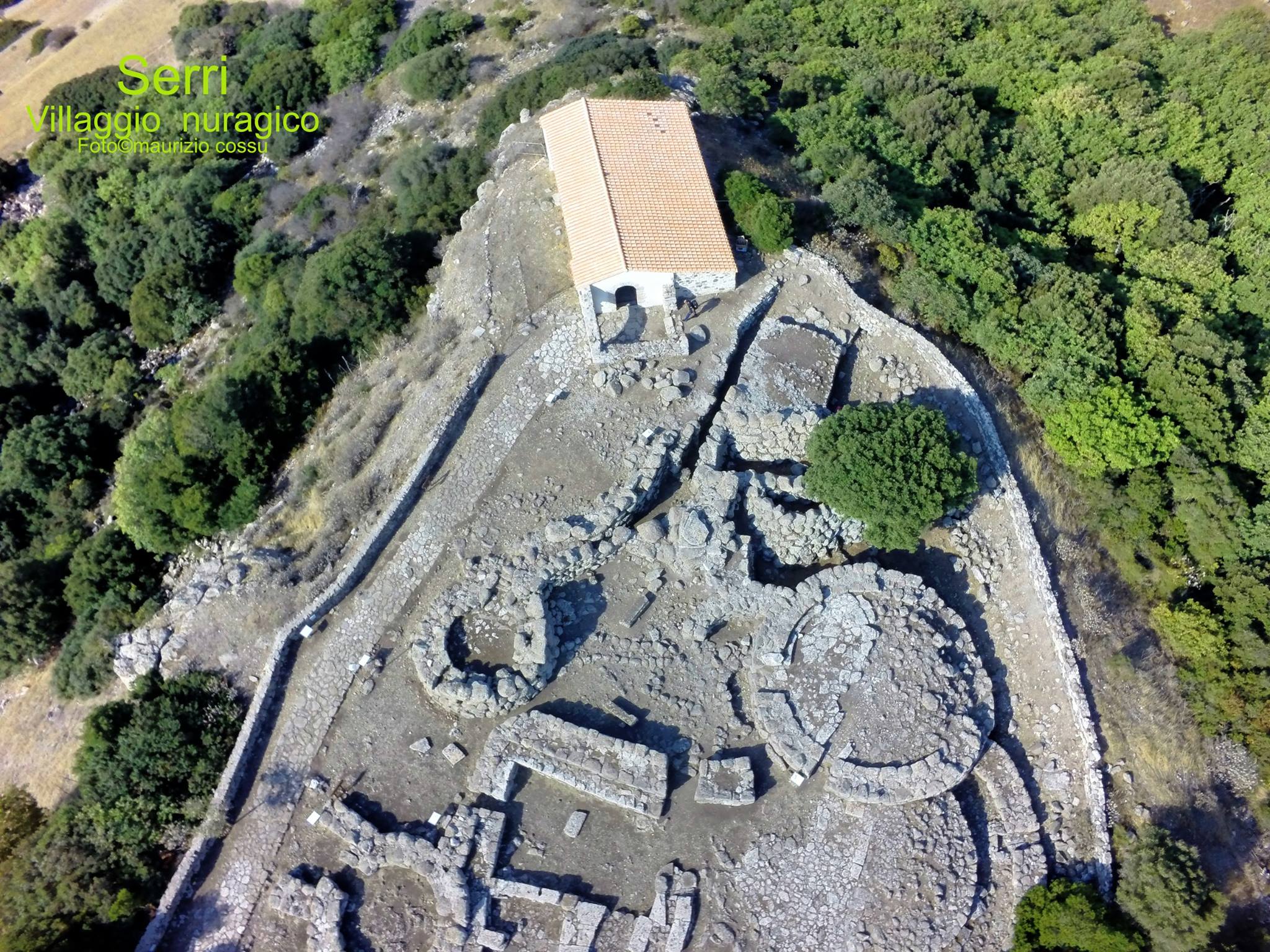“The Serri plateau presents itself, in archaeological terms, as a particularly sacred place for worship. In fact, among the constructions discovered there, the two most important have, albeit in different measures, a cultic character. They are not similar buildings, or of the same type; rather, they are of completely different types, each having a special plan and configuration, undoubtedly related to the different practical purposes each was meant to serve. One is a circular enclosure closed by a robust megalithic wall, measuring almost eleven meters in lower diameter, and is pierced by a door that opens to the south. The lower sections of the wall remain standing, made of large basalt blocks, up to a height of one to two meters…” “…Immediately to the left of the entrance stands a large monolithic basin of trachyte, hollowed out at the top in the form of a wide basin, which was meant to contain the liquid for the preliminary lustrations…” “…The lustral basin and the altar perhaps better align with the idea of an assembly that gathered here to deliberate while taking auspices, and sometimes transformed into a solemn tribunal…” “…The purely and exclusively cultic building, indeed the true temple, is instead the other construction of S. Vittoria. It is a circular chamber of fine workmanship, with a pointed dome, with a base diameter of over two meters, surrounded by a very robust circular wall, from which two straight, parallel arms extend towards the south, flanking a quadrangular space that serves as a vestibule. The chamber sinks about three-quarters of its height below the level of the vestibule: a stone staircase of thirteen steps leads from the vestibule to the bottom of the cell, which is formed by a kind of basin hollowed out in the basalt of the rock…”
(Reprint of the volume by Raffaele Pettazzoni: “La Religione primitiva in Sardegna” -1912- . Delfino Editore 1993).
Drawings taken from the cited re-edition of Pettazzoni’s book. Photos by Maurizio Cossu, Bibi Pinna, Valentino Selis, Marco Cocco, Sergio Melis, and Francesca Cossu.













